
Preparing for a tornado is a continuous process of planning, training and exercising a tornado safety plan. Planning for tornadoes means designating a safe place to take shelter during the storm, monitoring your community’s warning system and knowing how it works, and putting procedures in place to account for students and teachers in the building. Schools may need to get additional equipment and/or resources, such as emergency supplies identified in the plan.
Quick Navigation
What Is a Tornado?
How Do Tornadoes Form?
Watches and Warnings
Tornado Strengths
Is There a Need for Tornado Safety Strategies for Schools?
Hallways Are Not Enough
Tornado Safety for Schools: Valuable Tips
Identify Shelters
Access Real-Time Data
Listen to NOAA Weather Radio
Install a Tornado Status Horn
Get to Know State Emergency Tornado Operations
Practice Tornado Safety
Keep Track of Time
Debris Can Be Deadly
How Strong Is Your School?
Don’t Forget Portable Classrooms
Get Out of Common Areas
After the Storm
Conclusion
What Is a Tornado?
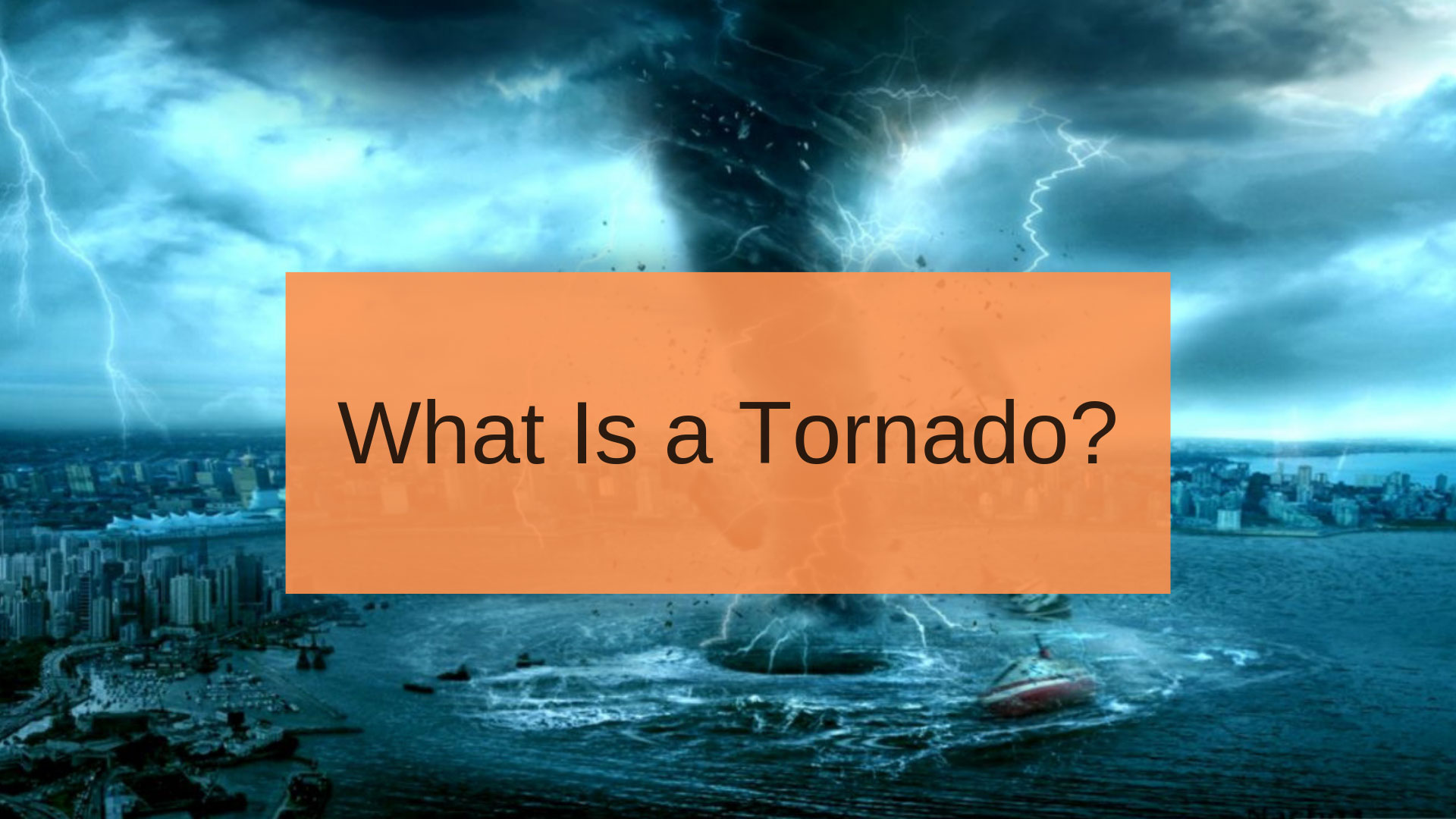
A tornado is a narrow, column of air that rotates violently as it that extends from the base of a thunderstorm to the ground. The most violent storms, tornadoes can occur just about anywhere. The U.S. has about 1,200 tornadoes annually. Some areas are more likely to have tornadoes and this region across the U.S. is dubbed Tornado Alley. Tornadoes can occur anytime, but they are more likely to occur during May into early June in the Southern Plains region. On the Gulf coast, they occur in early spring. In the northern plains and upper Midwest, June or July is peak tornado season.
WInds in a tornado can reach 300 miles per hour. A path of a tornado can be one mile wide and 50 miles long. Sometimes you can see the tornado, but at other times they are invisible due to rain, low-hanging clouds, and darkness. Warning signs that a tornado may be coming are a dark, greenish sky, large hail, a large, dark, low-lying cloud and you might hear what sounds like a freight train. Tornadoes cause about 70 deaths and 1,500 injuries in the U.S. every year.
How Do Tornadoes Form?

How tornadoes form isn’t entirely understood. Rotating thunderstorms called supercells tend to produce the most violent tornadoes. The storms have a well-defined radar circulation called a mesocyclone. Supercells also produce hail, high winds, frequent lightning, and flash floods. Experts believe tornado development is related to temperature differences between the edge of downdraft air wrapping around the mesocyclone.
Watches and Warnings
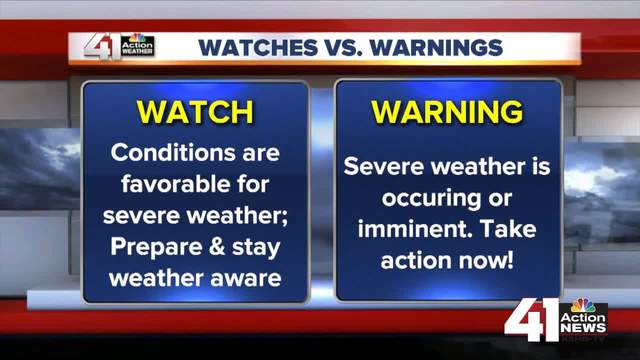
Part of tornado safety is being aware of the potential threat of tornadic activity. NOAA Storm Prediction Center meteorologists issue a tornado watch when conditions are favorable for tornadoes. A watch area can cover part of a state or several states. This means you should watch for possible storms that could produce tornadoes and stay informed through various media about the changing conditions in your area.
A Tornado warning is issued by your local NOAA National Weather Service Forecast Office when a tornado has been seen on the radar or reported by storm spotters. A warning means there is a serious threat to life and property to those in the path of the tornado. This is the time to enact your school’s tornado safety plan and seek shelter.
Tornado Strengths
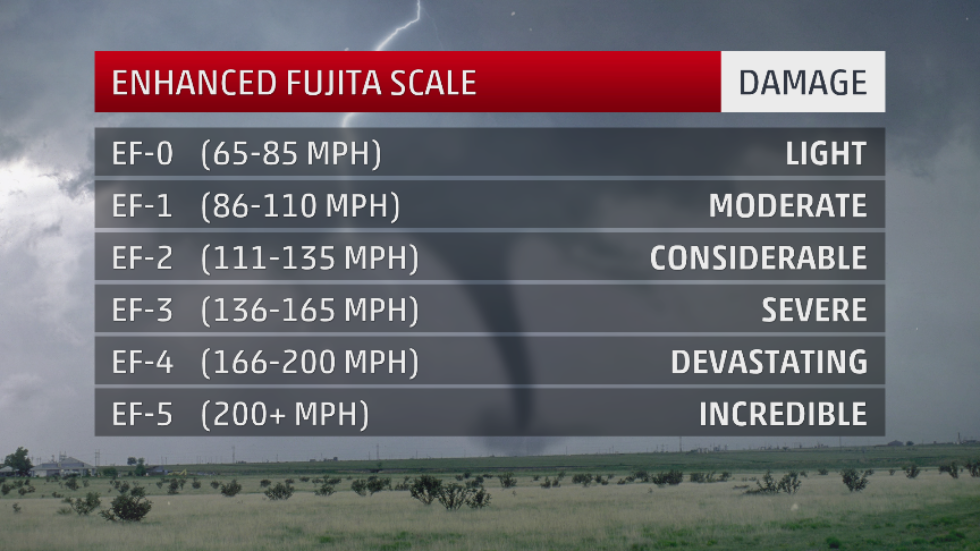
Tornadoes are measured on the “Enhanced Fujita Scale” by the National Weather Service. In addition to measuring wind speed, it takes into account 28 damage indicators such as building type, structures, and trees. Tornadoes are given a rating of 0-5, with 5 being the strongest and most damaging type of storm.
Is There a Need for Tornado Safety Strategies for Schools?
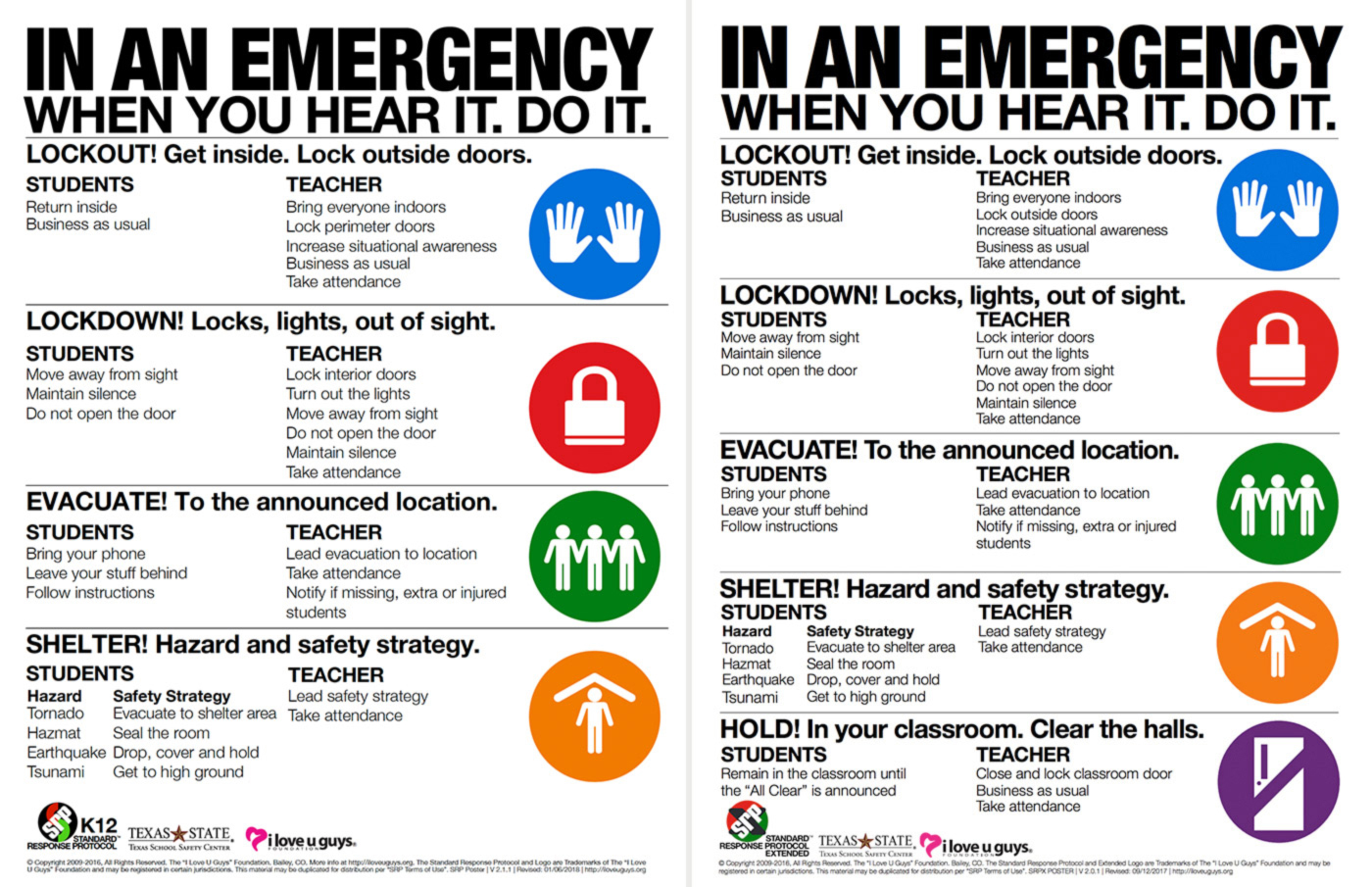
When the Moore tornado, an EF5, hit this Oklahoma City suburb on May 20, 2013, it killed seven children at Plaza Towers Elementary School. The storm tore off the roof and collapsed hallway walls onto students. This unfortunate event highlighted the fact that many schools are not built for safety. So there must be a solid tornado safety plan in place beyond where to take shelter.
Oklahoma has an average of 47 tornadoes each year, according to NOAA. But building codes are not designed to make sure schools can withstand tornadic winds. Since the Moore tornado, codes on new homes require they be built to withstand stronger winds and school in the area would have safe rooms that can withstand 250 mph winds.
Hallways Are Not Enough
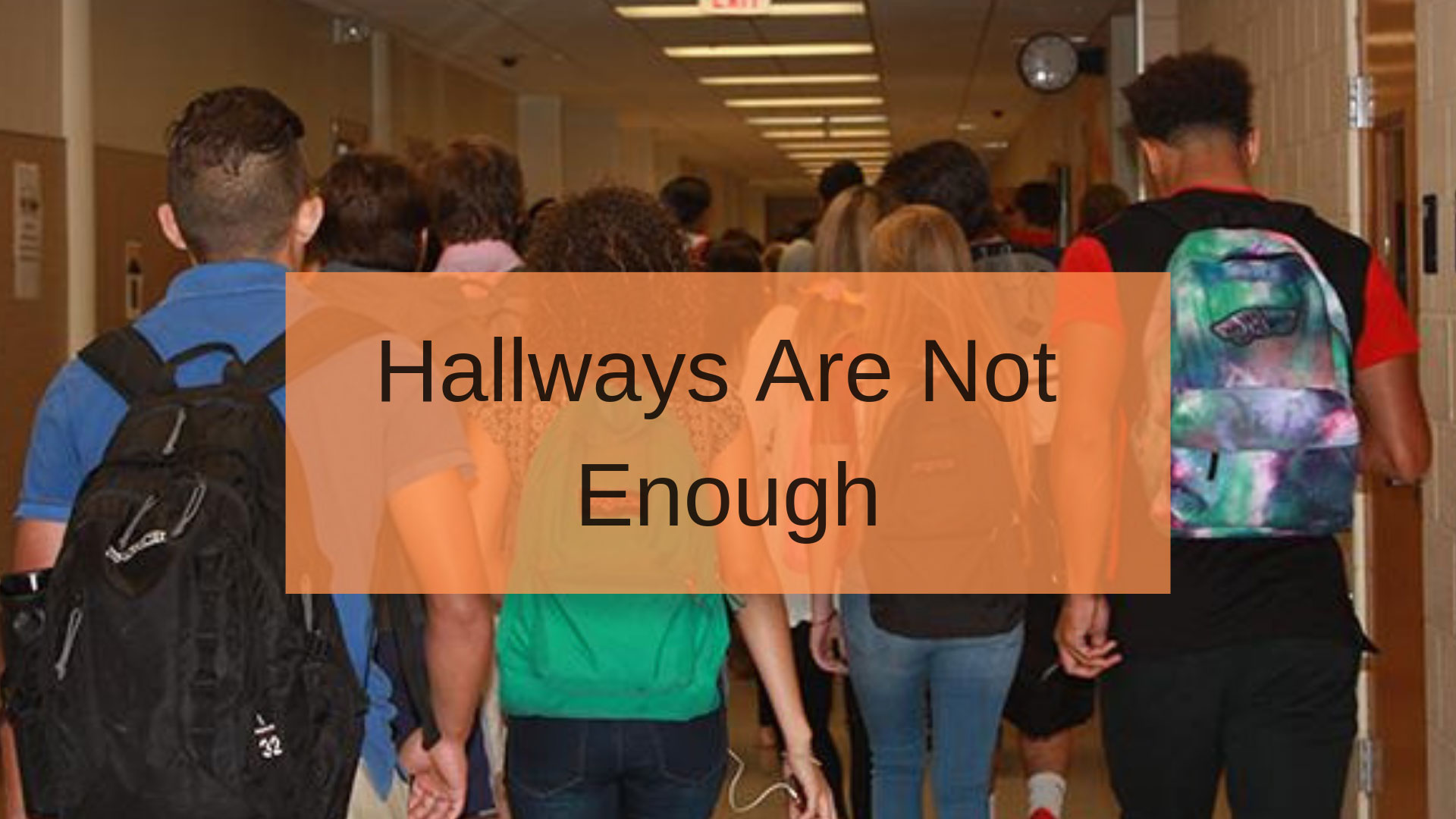
The structure of many schools may not align with tornado safety goals. The building may have hallways on exterior walls with windows. Schools built when open floor plans were popular are retrofitted with walls, which collapse when the roof is compromised. Interior hallways are also a danger if they have doors on either end. During the Joplin, Miss., tornado on May 22, 2011, school hallways became wind tunnels with flying debris. No students were at the school because the storm occurred on a Sunday.
Chisholm Life Special Education School and Greiffenstein Special Education Center had few interior areas for students to gather, so hallways in these schools were deemed the best place. But on May 3, 1999, a tornado struck the Wichita, Kan., schools and proved otherwise. The hallways in both schools had extensive damage. At Greiffenstein, a boiler chimney fell into a hallway and could have hurt or killed children sheltering there.
Luckily, with help from FEMA, the district has improved its tornado safety. After that event, the Wichita school district built 24 safe rooms in their schools that served 7,800 of the 9,000 students for approximately 180 operating school days per year.
Tornado Safety for Schools: Valuable Tips
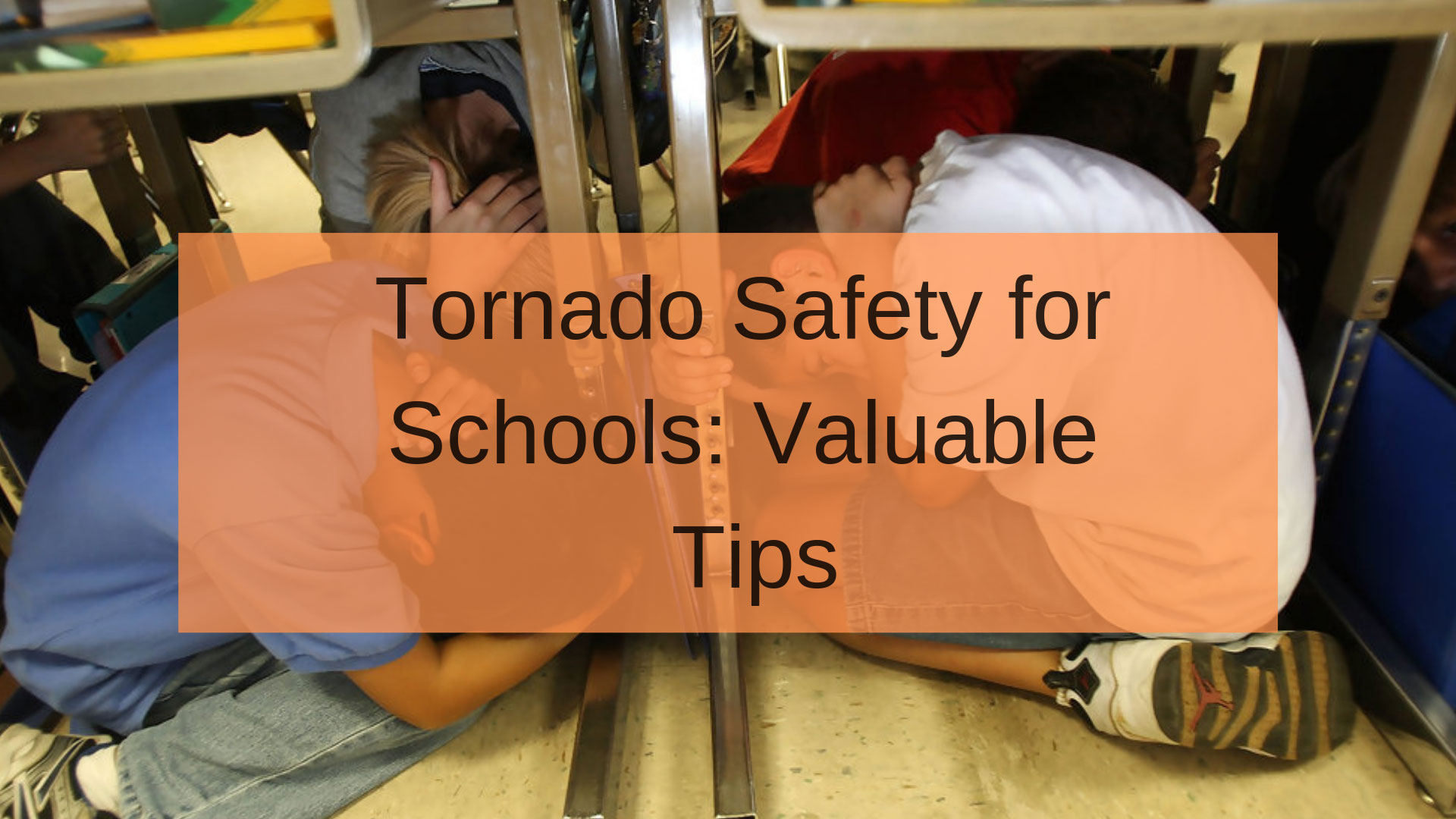
Identify Shelters
As we indicated earlier, hallways may not be the best option for shelter during a tornado. An underground area, such as a basement or storm cellar is ideal, but many areas and schools do not have this option. Identify small interior rooms on the lowest floor where students could shelter. Stay clear of doors, windows, and outside walls. Rooms constructed with reinforced concrete, brick or block with no windows and a heavy concrete floor or roof system are ideal.
Access Real-Time Data
Time is key when surviving a tornado. Accessing real-time weather data from sensors every two seconds can make a huge difference in coordinating a response to a tornado threat. Accurate information and automated decisions can get your whole school on the same page in a matter of seconds.
Listen to NOAA Weather Radio
NOAA Weather Radio All Hazards (NWR) is a nationwide network of radio stations broadcasting weather information directly from your nearest National Weather Service office.
Install a Tornado Status Horn
A surviving a tornado is very much like escaping a fire. Time is of the essence in tornado safety and an alarm will instinctually send you into action. A tornado horn that indicates a watch or warning can send a strong message to the entire school. An intercom system cannot reach students or teachers outside and may not convey the sense of urgency that a horn would.
Get to Know State Emergency Tornado Operations
Your state likely has emergency procedures for schools. These procedures could include:
- Drills
- The type of evacuation plan needed
- Emergency supplies required at the school
Practice Tornado Safety
Have frequent tornado drills and review the plan annually. Also, update the plan as changes occur to the building or classroom sizes. The best time to see if a drill works is when you don’t need it. Make sure your drills include special provisions for disabled students and students in portable classrooms.
Keep Track of Time
Taking more than two or three minutes to move all upper-floor students down is a crucial issue that must be addressed in your tornado safety plan. Although advanced notice of tornado warnings has increased, remember that some storms give no lead time. Warnings are imperfect, and radars can miss some things. Your tornado safety strategy should be built as if a tornado will hit your school with little or no warning. Then when warnings are issued with several minutes of lead time, you can execute your plan people with time to spare.
Debris Can Be Deadly
Remember earlier when we mentioned the Wichita and Joplin schools? The biggest tornado danger is debris. Think about the hazards that could come out of walls or the effect of doors on a hallway.
How Strong Is Your School?
How architecturally tough is the building? Can it withstand structural loads from winds at 150 or 200 miles-per-hour? These are all considerations that must be included in your tornado safety plan. Is there a space on the upper floor where students could go in the case of little to no warning? Newer schools are most likely tornado resistant.
Don’t Forget Portable Classrooms
These temporary buildings can be as dangerous as a mobile home during a storm. Your tornado safety plan must address getting students evacuated from portable classrooms and sheltering in the main building as quickly as possible. This means moving students before a tornado warning, preferably when a tornado or severe thunderstorm watch occurs. Moving students during a tornado watch or thunderstorm may be a logistical pain, but it can save lives.
Get Out of Common Areas
Unless specifically fortified as a storm shelter, large, open-span areas, such as gymnasiums, auditoriums, and most cafeterias should not serve as tornado shelters. There are structural weaknesses that make them more likely to collapse.
After the Storm
Keep students gathered in a calm manner, keeping them away from debris such as glass and power lines. While waiting for help, aid students who are injured. Make sure no matches or lighters are used in case of leaking natural gas pipes. Teachers, principals, and other adults should remain calm, setting an example for students.
Conclusion
A tornado safety plan is your best defense to keep students safe during the storm. Staying aware of weather conditions and the potential of tornadoes, knowing when and where to shelter and acting quickly when the alarm sounds will all help to ensure students survive the event.

